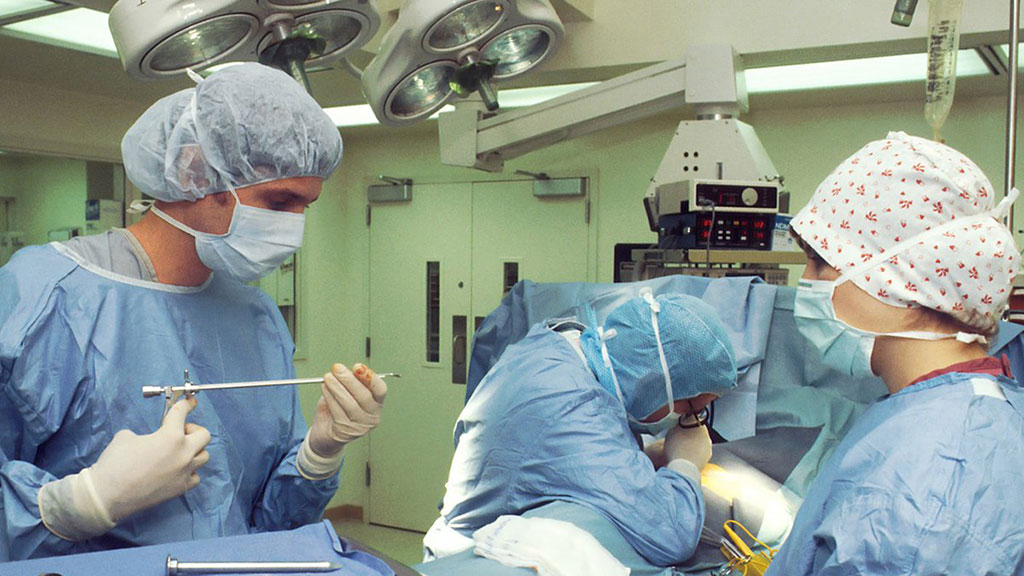Global Minimally Invasive Surgical Devices Market to Reach USD 28.5 Billion by 2026 Due to Need for Lesser Complications in Surgeries
|
By HospiMedica International staff writers Posted on 08 Feb 2022 |

The global minimally invasive surgical devices market is projected to grow at a CAGR of 5.56% from USD 20.93 billion in 2020 to USD 28.54 billion by 2026, driven mainly by the increasing preference for minimally invasive surgeries to avoid physical scar marks and painful recovery, and increasing instances of prolonged & chronic diseases such as cardiovascular diseases, neurological diseases, cancer, etc., where surgeries are a must as a treatment method.
These are the latest findings of Research and Markets (Dublin, Ireland), a market research company.
Minimally invasive devices are technologically advanced and require rather small entry points to enter the human body. Complications of surgeries like cancer removal surgeries, endoscopic surgeries, cardiovascular surgeries, etc. has also increased preference among surgeons for minimally invasive surgeries in order to avoid mistakes, post op-pain for patient, over bleeding, or other complications. Furthermore, increased investment in the healthcare sector, consistent research and development of innovative medical devices by multiple market players are further driving market growth.
However, technological advancements in existing medical devices demands financial and research investments from the market players, and the manufactured medical devices are also required to obtain approvals through clinical trials before being commercialized and utilized for patient treatment, that may restrain market growth.
Based on type, the handheld instruments segment is anticipated to hold the largest revenue share of the minimally invasive surgical devices market and maintain a dominant position on account of increasing demand for precision during surgeries. Moreover, a surge in the demand for technologically-advanced surgical devices like graspers, retractors, and elevators is also expected to support market growth.
Related Links:
Research and Markets
Latest Business News
- Philips and Masimo Partner to Advance Patient Monitoring Measurement Technologies
- B. Braun Acquires Digital Microsurgery Company True Digital Surgery
- CMEF 2025 to Promote Holistic and High-Quality Development of Medical and Health Industry
- Bayer and Broad Institute Extend Research Collaboration to Develop New Cardiovascular Therapies
- Medtronic Partners with Corsano to Expand Acute Care & Monitoring Portfolio in Europe
- Expanded Collaboration to Transform OR Technology Through AI and Automation
- Becton Dickinson to Spin Out Biosciences and Diagnostic Solutions Business
- Boston Scientific Acquires Medical Device Company SoniVie
- 2026 World Hospital Congress to be Held in Seoul
- Teleflex to Acquire BIOTRONIK’s Vascular Intervention Business
- Philips and Mass General Brigham Collaborate on Improving Patient Care with Live AI-Powered Insights
- Arab Health 2025 Celebrates Landmark 50th Edition
- Boston Scientific Acquires Medical Device Company Intera Oncology
- MEDICA 2024 to Highlight Hot Topics of MedTech Industry
- Start-Ups To Once Again Play Starring Role at MEDICA 2024
- Boston Scientific to Acquire AFib Ablation Company Cortex
Channels
Critical Care
view channel
Light-Based Technology to Measure Brain Blood Flow Could Diagnose Stroke and TBI
Monitoring blood flow in the brain is crucial for diagnosing and treating neurological conditions such as stroke, traumatic brain injury (TBI), and vascular dementia. However, current imaging methods like... Read more
AI Heart Attack Risk Assessment Tool Outperforms Existing Methods
For decades, doctors have relied on standardized scoring systems to assess patients with the most common type of heart attack—non-ST-elevation acute coronary syndrome (NSTE-ACS). The GRACE score, used... Read moreSurgical Techniques
view channel
Minimally Invasive Endoscopic Surgery Improves Severe Stroke Outcomes
Intracerebral hemorrhage, a type of stroke caused by bleeding deep within the brain, remains one of the most challenging neurological emergencies to treat. Accounting for about 15% of all strokes, it carries... Read more
Novel Glue Prevents Complications After Breast Cancer Surgery
Seroma and prolonged lymphorrhea are among the most common complications following axillary lymphadenectomy in breast cancer patients. These postoperative issues can delay recovery and postpone the start... Read morePatient Care
view channel
Revolutionary Automatic IV-Line Flushing Device to Enhance Infusion Care
More than 80% of in-hospital patients receive intravenous (IV) therapy. Every dose of IV medicine delivered in a small volume (<250 mL) infusion bag should be followed by subsequent flushing to ensure... Read more
VR Training Tool Combats Contamination of Portable Medical Equipment
Healthcare-associated infections (HAIs) impact one in every 31 patients, cause nearly 100,000 deaths each year, and cost USD 28.4 billion in direct medical expenses. Notably, up to 75% of these infections... Read more
Portable Biosensor Platform to Reduce Hospital-Acquired Infections
Approximately 4 million patients in the European Union acquire healthcare-associated infections (HAIs) or nosocomial infections each year, with around 37,000 deaths directly resulting from these infections,... Read moreFirst-Of-Its-Kind Portable Germicidal Light Technology Disinfects High-Touch Clinical Surfaces in Seconds
Reducing healthcare-acquired infections (HAIs) remains a pressing issue within global healthcare systems. In the United States alone, 1.7 million patients contract HAIs annually, leading to approximately... Read moreHealth IT
view channel
















